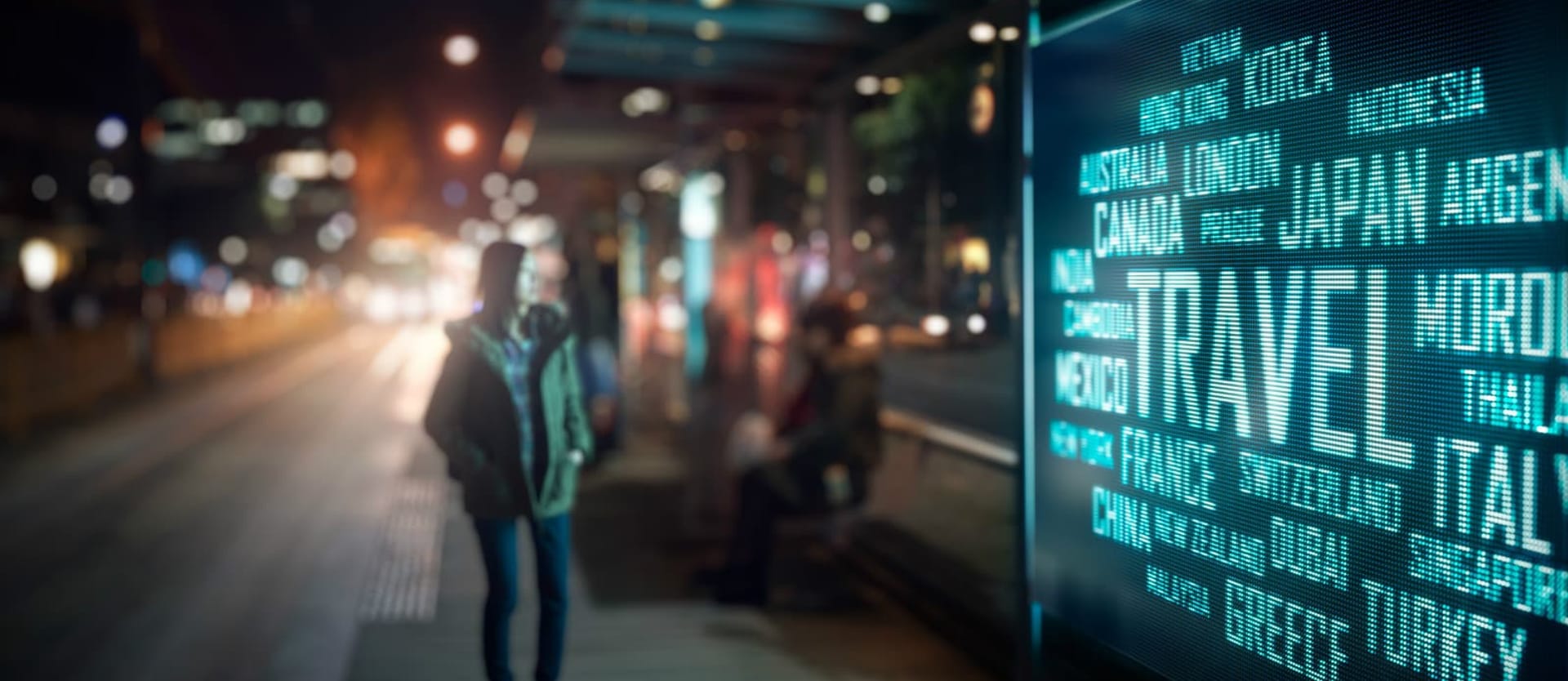The Travel & Tourism sector is in the midst of a digital revolution. From AI-driven personalisation to advancements in aviation sustainability, innovation is reshaping how we explore the world.
Artificial intelligence is often touted as a game-changer – including in the travel industry. However, despite the buzz, its adoption is still in the early stages. While many travel companies are beginning to experiment with AI, it’s still far from being widespread across the sector.
So in this post, we explore how different travel industry sectors, like hospitality, aviation, and travel distribution, actually use AI.
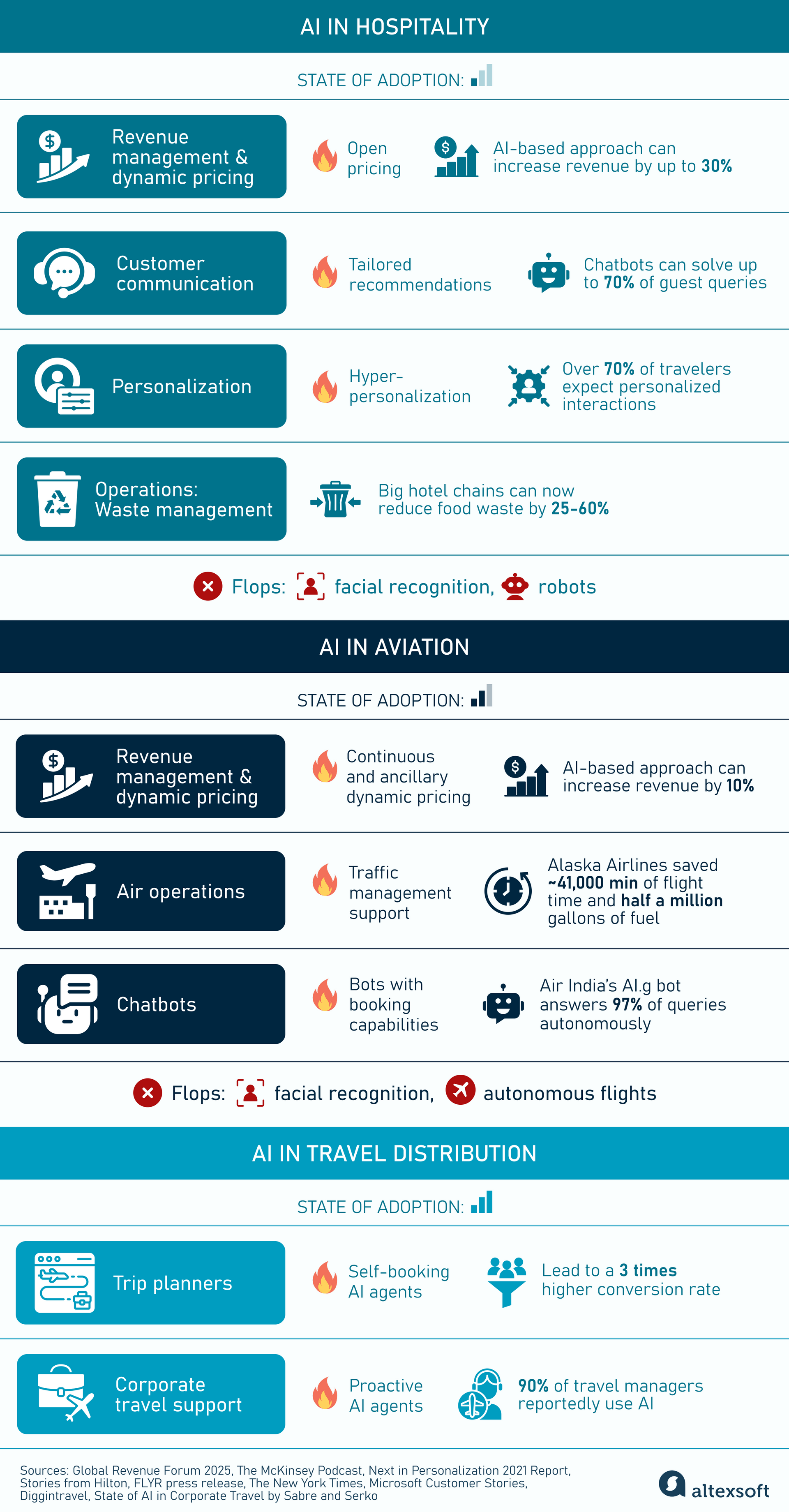
AI in travel
Of course, AI is too broad a concept and has too many applications to cover in a short blog post, so we’ll only focus on the main ones.
AI in hospitality
Though a bit slow in swinging into action, virtually all hoteliers realize that AI will transform the industry, and most are planning to invest in the new tech. The most wanted areas are revenue management, automating communications, and personalizing guest experience.
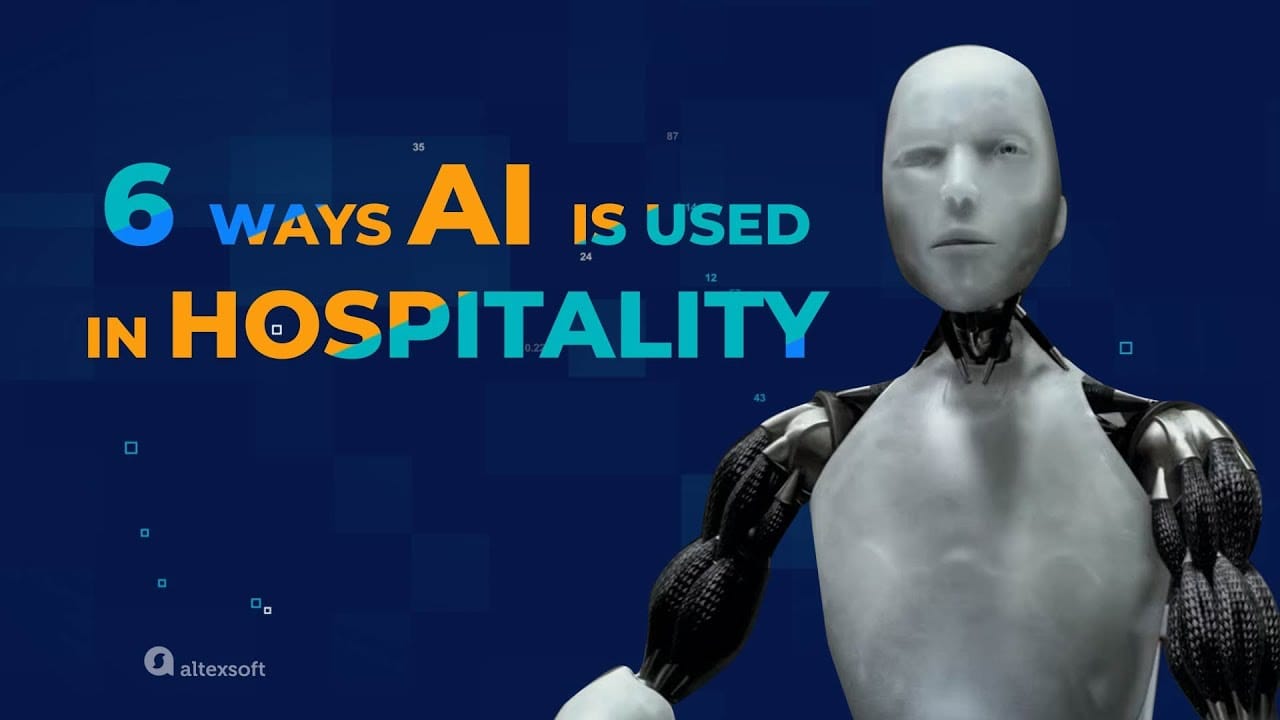

Interestingly, the short-term rental sector appears to be more willing to adopt AI-driven tech. Seven out of ten property owners and managers use AI tools to manage their business, ranging from dynamic pricing to automating guest communications and marketing campaigns. But alternative accommodation is a totally different beast, so we’ll mostly talk about hotels.
Revenue management and dynamic pricing
What’s the issue?
Hoteliers constantly face the tricky challenge of filling rooms at the right price. Whether it's the peak holiday season or a quiet weekday, they’re looking for that sweet spot where rooms are filled – and no money is left on the table.
Seeing how airlines drive revenues with dynamic pricing, hoteliers also picked up this approach in the 1980s in an attempt to squeeze the most out of every available room.
AI to the rescue:
Revenue management was an early adopter of AI in hospitality and remains a core use case. And dynamic pricing is just one part of it.
Hotels use machine learning algorithms to analyze massive amounts of data and define the best rate for each room type or package, maximizing occupancy and RevPAR (revenue per available room).
Ira Vouk, hospitality technology and revenue management consultant, believes that “Revenue management has the highest ROI and it must implement AI because there's so much data you can’t process manually. And dynamic pricing is the main function of revenue management, but there's also demand forecasting, which precedes dynamic pricing, and there’s managing distribution of different channels, and there’s setting restrictions, overselling, and so much more. All those things can be and should be based on machine learning algorithms that are much smarter than humans.”
The hottest stuff:
While a rule-based BAR approach is the first stage of dynamic pricing, AI allows you to do much more. Most advanced revenue management systems (RMSs) enable open pricing – a highly flexible strategy that lets you adjust the rate of each room or service independently based on market factors.
The integration of AI in revenue management could improve revenue by up to 30 percent.
With such flexibility, hotels can capture more revenue in busier periods and stimulate demand with competitive prices in low seasons – all with far more precision than manual pricing.
AI in action:
So more and more businesses lean into it. As of 2024, about 37 percent of hotel chains used AI for revenue/yield management, and another 29 percent planned to do so.
Major hotel chains mostly turn to established providers such as Duetto or IDeaS (this one has been on the market since 1989). Meanwhile, smaller hotels and vacation rentals usually opt for newer players (e.g., Pricepoint, Pricingservice.ai, or Wheelhouse). They are cheaper and don’t require historical data as they are trained on their own datasets. However, since such startups develop AI-native products, they often turn out to be more modern and agile.
Customer communication
What’s the issue?
Every successful hotel has experienced that chaos when customer questions come in nonstop, and staff just can’t keep up. Guests want quick answers about bookings, room service, or local tips – and they want them immediately! – but there just aren’t enough people to answer every ping.
So, as a replacement for online FAQs (that no one’s reading anyway), chatbots came in. They became the desired sidekick that could handle routine tasks and give guests all the answers they wanted.
AI to the rescue:
As of April 2025, 10 percent of us humans use ChatGPT – and since that probably includes you, you must know how it works. And travel is no exception to the frenzy.
Conversational AI enhances hotel customer service by powering multilingual chatbots that handle guest inquiries, bookings, and requests 24/7. These tools can resolve 70 percent of queries just as well as humans. So no wonder a 2024 survey showed that 65 percent of travel experts believe that chatbots and AI agents in customer service are the most impactful areas for genAI implementation.
The key benefit is consistent, on-demand service – AI assistants ensure no guest question goes unanswered, even late at night or during peak times. Needless to say, that makes guests happy.
The hottest stuff:
But chatbots can do much more than provide a Wi-Fi password or schedule wake-up calls (those are the top reasons guests use chatbots). AI-powered assistants learn from your previous interactions and can suggest tailored activities, dining options, and services based on your preferences. Such a digital concierge service proved to be especially popular with Gen Z and Millennial travelers.
AI in action:
Hotels take different approaches to adopting technology. Some prefer to partner with software providers for ready-made solutions. For example, Wyndham Hotels’ guest engagement platform, Wyndham Connect, is powered by Canary Technologies. And Hilton used the product of Udesk to enhance its customer service in Japan.
Other brands build their messaging tools on top of popular LLMs. For example, IHG partnered with Google Cloud to develop its intelligent chatbot Trip Planner on top of Gemini. Also, Renaissance Hotel, one of Marriott's brands, used ChatGPT as a basis for their virtual assistant.
Read more about ChatGPT integration in travel in a separate post.
While some hotels integrate third-party solutions, others build their own. For example, Edwardian Hotels London has developed Edward, an AI concierge, teaching it with 20 years' worth of data.
The results were impressive: Edward handled 69 percent of guest requests in 2019 alone, saving the hotel 84 working days, and increased room service sales by 10-50 percent, with some hotels seeing double the average phone orders.
Additionally, Edward improves customer satisfaction, boosting guest survey scores by 0.12 to 0.14 points compared to nonusers. He also proactively solves problems, such as reminding international guests about their passports
Personalization
What’s the issue?
Yeah, it’s a bit too broad and another industry buzzword, but we can’t just skip it as personalization has been the major trend for the last few years. McKinsey reports that 71 percent of people expect personalized interactions, and 76 percent get frustrated when it doesn’t happen.
As travel companies make every effort to pamper travelers, the bar gets extremely high. So a manual approach is no longer an option.
AI to the rescue:
AI allows hotels to accurately define customer segments and create relevant offers for each group. And it’s not only about what to offer, but also the best times for promotions.
Besides marketing activities, personalization is about improving the work of the front desk and customer support. Here, AI quickly summarizes guest profiles from the CRM so that hotel staff can promptly deliver tailored service (e.g., Mews Smart Tips feature).
Such service boosts guest satisfaction and builds loyalty. It also drives sales, as 65 percent of people see targeted promotions as a top reason to make a purchase.
Also, on property, personalization can extend to smart room preferences – AI can remember and preset a guest’s preferred room temperature, lighting, or TV streaming service.
The hottest stuff:
Hyperpersonalization is the most advanced approach when hotels create tailored offers for every single guest instead of a broad customer segment. Past stays, purchase patterns, loyalty profile, real-time trip context, even social media feedback – all that becomes the basis for individualized interactions. Obviously, only AI can provide the necessary granularity in all this data and create the ultimate personalized experience.
AI in action:
Personalization isn’t only about knowing the guest’s name and preferences, but about being proactive and anticipating a guest's wants and needs.
Now, instead of “Hi, have you stayed with us before?” it's
“Welcome back, John! We’ve made sure your favorite room with the city view is ready for you, and you’re all set up with hypoallergenic pillows and gluten-free snacks. By the way, we have a slot available at the golf course tomorrow afternoon. Would you like me to reserve a tee time for you?”
Knowing guest preferences really supports upselling and cross-selling – both during booking and at the property – which is critical to the revenue strategy.
Upselling is one of the most successful tools in the hotel industry to make additional revenue, and the better the data is, the better we can do that before or on arrival.
Operations: Waste management
AI can be used in a myriad of ways to support back-office hotel operations, from accounting to scheduling to reporting. We’ll just look at one application.
What’s the issue?
Poor waste management practices lead to higher expenses (an average restaurant overspends $20k-$40k yearly), a negative impact on the environment, and unhappy guests who care about sustainability.
Accor reports that “on average, almost 20 tons of food waste is generated per hotel each year, accounting for around 43 percent of a hotel’s total waste. While 45 percent of food waste in hotels comes from processing and excess preparation, 34 percent is due to food left on plates. The remaining 20 percent is the result of poor inventory management.”
AI to the rescue:
Though the Internet of Things (IoT) technology is among the most underappreciated in the travel industry, big hotel chains are actively using AI in their sustainability projects.
For example, Winnow Vision and Orbisk are among the most popular platforms. They work by installing a camera above the kitchen waste bin, which, combined with smart scales, automatically identifies and weighs discarded food items. Using ML, the system learns to recognize different types of food waste, providing real-time data to chefs and managers.
AI in action:
Several major hotel groups including Iberostar are using AI to monitor and reduce food waste, which recently resulted not only in a 27 percent cost saving but prevented thousands of kilos of unwanted food going to landfill.
To reduce waste, Accor uses a combination of technologies, including Winnow Vision, Orbisk, Gaïa, and Fullsoon. As a result, Accor's hotels reduce their annual food waste by 1.6 to 12 tons, depending on the property.
Other hotel chains do something similar. Such brands as Hilton, Marriott, IHG, Compass Group, ISS, and Iberostar rely on Winnow for AI-driven waste management. For example, Hilton reduced food waste by 62 percent during its Green Breakfast initiative in UAE. And Marriott, after adding Winnow to its UK properties, reported a 25 percent reduction in food waste in the first 6 months of 2024.
Honorable mentions: Other AI use cases in hospitality
Of course, there are many more fascinating – and highly successful – use cases of AI implementation in hospitality:
- sentiment analysis and reputation management (read how we at AltexSoft have built an ML-based tool for comparing hotel amenities that analyzes online reviews and generates ratings),
- energy management (Hilton saved over $1 billion in utility costs with its proprietary AI-based system LightStay),
- content creation (31 percent of hotels already use AI for that purpose, and another 27 percent plan to),
- support of back office operations such as scheduling and inventory management,
- fraud detection,
- data analytics, etc.
Vacation rental management companies can also use AI for remote property inspections and risk management. Watch more in our video below.
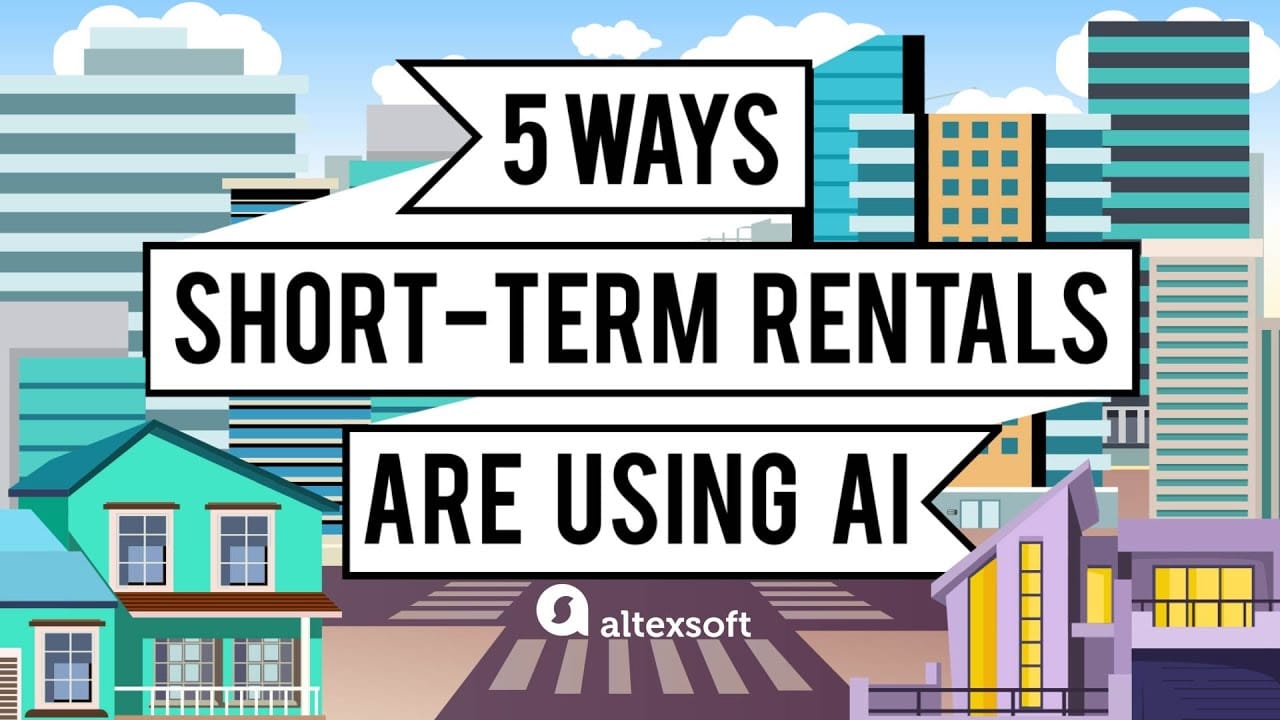

As for future AI implementation, hoteliers put faith in process optimization and recommendation engines, direct booking of local experiences/activities, creativity-focused AI, and chatbots with full booking capabilities.
While some AI initiatives in hotels have been a hit, others... not so much.
Which AI initiatives failed?
Robots. Yeah, that notorious Henn Na Hotel in Japan. We all know its story of going all-in on robots – there were robot receptionists (including a dinosaur, because why not?), robot bellhops, and even in-room assistants.
But by 2019, they had to "fire" over half of their 243 robots. Turns out, robots aren’t always the best at handling the complexities of hospitality: the front desk bots couldn’t recognize speech properly, the porter robots couldn’t even reach all the rooms, and the in-room robots kept mistaking snoring for commands. Guests weren’t impressed, and the hotel ended up bringing back more human staff to save the day.
It wasn’t just the dinosaur receptionist that flopped – other robot initiatives like Hilton’s Connie and SoftBank’s Pepper humanoid robots didn’t quite live up to the hype either.
While they were fun to interact with, these robots mostly turned into novelties rather than useful tools. They struggled to handle more complex tasks, and hotels found it hard to justify their high costs for something that guests eventually treated like a quirky photo op rather than a helpful assistant.
Facial recognition. While the idea of speeding up the check-in process with a quick face scan seemed like a win, it faced major privacy concerns, especially in places like China. Guests weren’t thrilled about submitting their biometric data, and in 2024, big hotel chains like Hilton and Marriott in Shanghai stopped using it after authorities raised privacy issues.
Even outside China, guests felt uneasy about their faces being scanned, and many hotels found it tough to convince customers that the tech was safe. So, while facial recognition could’ve made check-in faster, it just didn’t sit well with travelers – obviously, convenience alone isn’t enough if it feels too invasive.
So the experiments go on. The industry is open to innovation, but at the same time, it wants the best bang for its buck, so the progress is a bit cautious.
So if we talk about hospitality, we're behind aviation and many other industries in terms of technology adoption because of the [industry] composition, because of the fragmentation, and because of the conservative mindset.
Also note that while AI is steadily making its way into hospitality, only 12 percent of travelers would support machines managing all key hotel functions, so a human touch is still essential. After all, that’s what true hospitality is about.
AI in aviation
The air industry has been a slow adopter of AI. But gradually, it’s getting on track, seeing AI’s immense potential.
Major tech providers like Sabre and Amadeus add AI/ML capabilities to their products. Carriers and aircraft manufacturers alike develop AI-powered solutions to support their operations. Even IATA, the main industry trade association, has been experimenting with AI for cargo acceptance and digital identity management.
And, of course, carriers join that race. Accenture reports that over 60 percent of airlines plan to focus on AI/ML, IoT, and other advanced tech solutions.
However, per DealRoom, the vast majority of investment goes to startups that work in the field of sustainable aviation; they collectively raised over $13 billion. It shows us that most industry players partner with old guard tech providers (e.g., Sabre, IBM, Microsoft, etc.) to develop proprietary AI solutions.
Revenue management and dynamic pricing
What’s the issue?
In aviation, the problem was basically the same as in hospitality: Airlines were leaving money on the table by selling all their seats at the same price. That’s where revenue management came in, helping airlines understand customer behavior, figure out the best pricing strategies, and fill seats without giving them away for too little. So since the 1980s, airlines have tweaked fares to maximize sales.
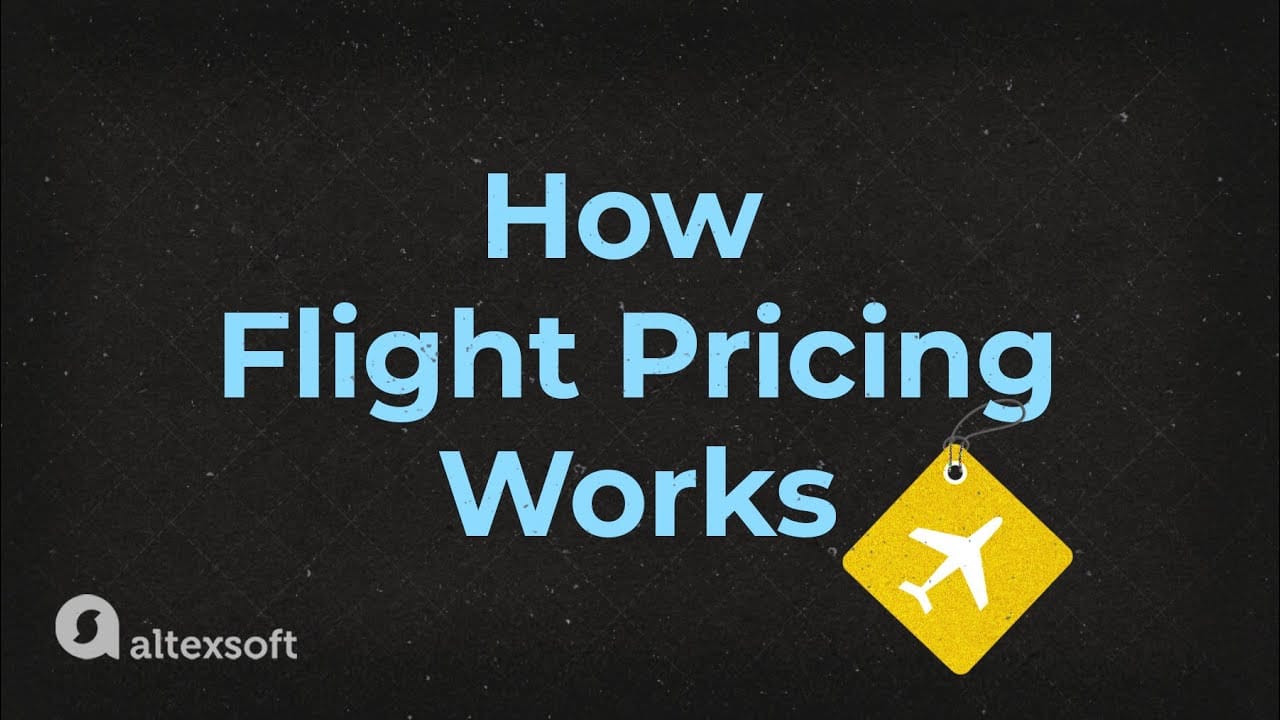

AI to the rescue:
While smaller carriers use statistical modeling, rule-based systems, and gut feeling to adjust prices, large players started turning to AI/ML.
These technologies allow them to factor in as many variables as possible (demand, booking window, weather, booking channel, competition, etc.) and enable dynamic pricing.
The hottest stuff:
The most sophisticated type of dynamic pricing is continuous pricing (or total dynamic pricing). It involves dynamically adjusting airfares in response to contextual signals – and AI/ML provides the required granularity to do so and overcome the limit of 26 price points for all fare buckets. Lufthansa and KLM were among the early adopters of this approach.
Also, some AI-powered platforms enable ancillary dynamic pricing. So an airline can dynamically change the price of extras like luggage or meals, taking into account the day of the week, market trends, and what passengers are interested in or willing to buy. For example, with PROS Dynamic Ancillary Pricing solution, airBaltic has achieved a 6 percent revenue increase per passenger.
AI in action:
All major airlines rely on advanced AI solutions to adjust rates and maximize sales. JetBlue uses FLYR’s revenue management platform to predict demand and define optimal pricing. Virgin Atlantic’s partnership with FLYR resulted in a 10 percent increase in seating revenues.
Lufthansa managed to reach a revenue uplift of 5.2 percent due to the PROS pricing solution.
We at AltexSoft also worked in this field when we built an ML-based POC of a pricing system that had the potential to increase revenue by 3-5 percent for SkyUp. Read more in the case study.
Air operations, route planning, and traffic management
What’s the issue?
Managing a 300-ton metal thing 7 miles above the Earth doesn’t sound like an easy gig. Pilots must juggle real-time flight data – when anything can go wrong virtually any second, communicate with ground staff, and handle a ton of other things, often all at once. It’s no wonder staying on top of it all can feel a bit overwhelming.
Of course, planes have always been stuffed with all sorts of technology, but it seems like perfection keeps calling from just around the corner.
AI to the rescue:
AI analyzes real-time data, such as weather conditions and air traffic, to optimize routes and support pilots with in-flight recommendations. It can also optimize fuel use, adjusting flight speeds or altitudes.
The hottest stuff:
AI not only supports pilots during flights but also aids ground staff. An AI traffic management system is being tested at Heathrow Airport to assist air traffic controllers.
AI in action:
Alaska Airlines uses ASI’s Flyways AI Platform to generate optimized route recommendations. Flyways analyzes weather patterns, winds, turbulence, airspace constraints, and air traffic volume and suggests safe routes with minimal fuel consumption and flight time, avoiding potentially congested airspace.
In 2023, this approach helped Alaska save around 41,000 minutes of flight time and half a million gallons of fuel (about 25 percent of Alaska flights used this system).
Chatbots
What’s the issue?
Just as in hospitality, passengers want quick, round-the-clock answers about flight status, baggage claims, seat availability, and more – often outside regular office hours. Traditional customer support systems just couldn’t keep up.
AI to the rescue:
Generative agents provide instant responses, helping airlines handle the growing demand for real-time customer support.
Interestingly, while carriers see the potential of genAI to improve customer experience, Accenture reports that 82 percent of companies are still in the ideation or pilot phases.
The hottest stuff:
Currently, the trend in aviation is going beyond chatbots merely answering traveler questions, but embedding booking and trip-planning capabilities. Over 90 percent of companies consider implementing these technologies, though only 6 percent have already done that.
KLM’s Ask Atlas is a shining example of a trip-planning and recommendation platform. Alaska Airlines has also developed a destination search tool on top of OpenAI and introduced it in April 2024. And Qatar Airways’ Sama is almost like a human agent: Not only can it book a trip, but it even has a personal Instagram account.
AI in action:
Most big companies now rely on chatbots to enhance customer support. United uses AI to message travelers with short explanations about flight delays. This initiative, called “Every Flight Has a Story,” led to a 6 percent increase in customer satisfaction.
Air India’s AI.g bot, built on Microsoft Azure OpenAI Service, answers 97 percent of queries autonomously. Wizz Air’s Amelia calls passengers in case of flight status changes and provides options for resolving the issue (rebook, get a refund, etc.). Lufthansa used Cognigy.AI’s tool; now, it handles over 16 million conversations per year.
Honorable mentions: Other AI use cases in aviation
Despite the low adoption rates, there are multiple application areas for AI that carriers, airports, manufacturers, and tech providers actively explore.
Predictive maintenance. Predictive maintenance is crucial in aviation because it improves safety, reduces the risk of delays, and lowers repair costs. This approach helps airlines avoid unexpected aircraft breakdowns by predicting when maintenance is needed before a failure occurs.
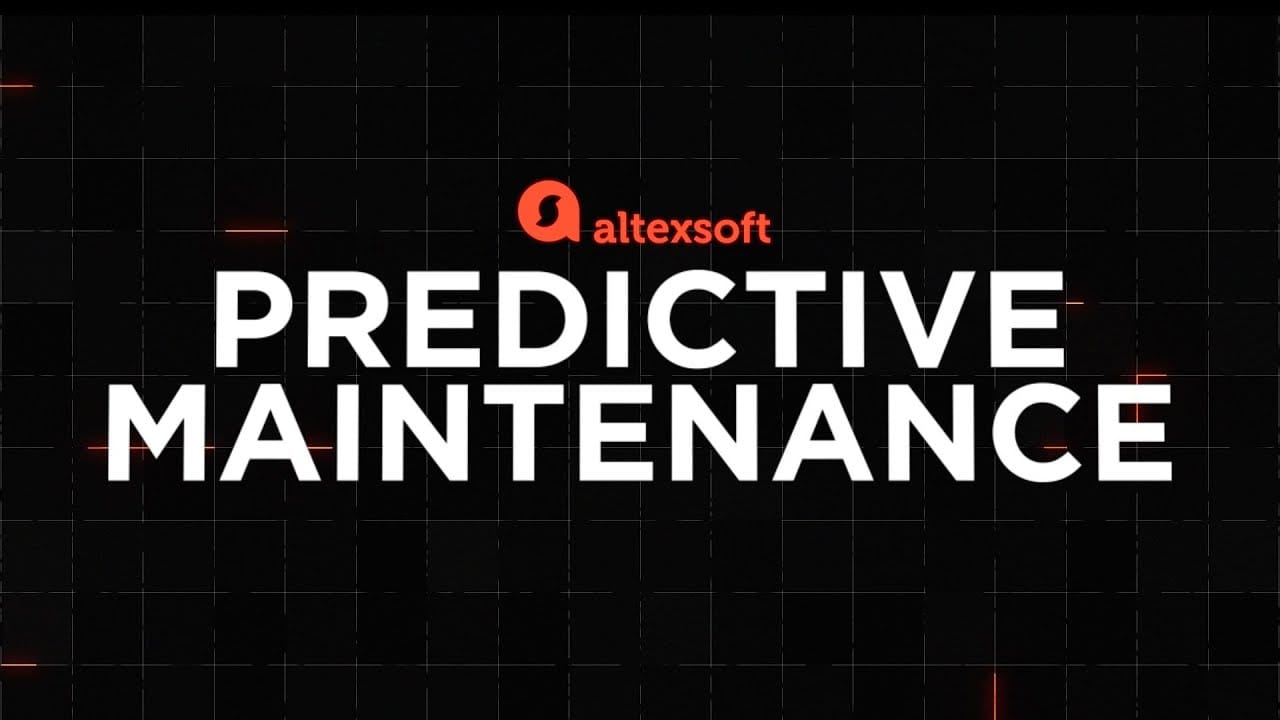

Airbus, together with Palantir, developed Skywise – a big data-dependent system that enables predictive maintenance and enhances operations. Delta was awarded for its TechOps’ work with the APEX program that uses predictive and simulation technologies to enhance engine maintenance. And GE Aerospace, among other AI applications, has recently unveiled an engine inspection tool.
Digital twins in maintenance and manufacturing. General Electric has been creating digital replicas of its jet engines for years now. This technology allows the manufacturer to monitor part performance and supports predictive maintenance. Similarly, Boeing incorporates machine learning and digital twins into its manufacturing processes, from design to production.
Taxiing optimization. American Airlines’ Smart Gating technology uses real-time flight data and other information to automatically assign arriving aircraft to the closest available gate, minimizing taxi time. It helps the carrier reduce the total time aircraft spend taxiing by 17 hours each day and saves 1.4 million gallons of jet fuel annually.
Fuel management. SITA OptiClimb® promises to save up to 5 percent of fuel per flight by building a predictive performance model for each aircraft and feeding it with weather forecasts and operational flight plans.
Lost-and-found items management. Airports around the world use computer vision, data matching, and genAI technologies to retrieve lost items.
More use cases include
- passenger processing with facial recognition and biometric systems,
- turnaround support,
- delay prediction,
- scheduling,
- baggage handling,
- autonomous vehicles at airports,
- aircraft design,
- analytics, etc.
As you can see, the implementation areas are many.
Which AI initiatives failed?
The industry is still at the early stages of adopting AI, so it’s tough to predict which technologies are here to stay – and which ones will fade away.
For example, facial recognition is as controversial in aviation as it is in hospitality. On one hand, TSA has a big plan to roll it out in 400+ airports across the US, but on the other, some senators are calling to pause this program due to privacy and efficiency concerns.
Another dubious innovation is autonomous flights. As the industry forerunner, Boeing presented its autonomous flight technology back in 2020, and Airbus is working on Project Morgan, which suggests a transition to AI-driven, single-pilot operations.
But despite significant progress, it’s still in the trial phase. Airlines and regulators haven't yet approved autonomous – or even single-pilot – flights. Safety concerns, regulatory hurdles, and passenger trust issues are the primary reasons.
We’ll just have to wait and see which innovations make it. What’s clear, though, is that aviation companies are constantly looking for ways to improve, and AI's potential in this field is sky-high.
AI for OTAs, TMCs, and other travel distributors
Now this part is the most controversial. On one hand, being digital by nature, OTAs were among the industry pioneers to test the AI waters – Kayak partnered with Alexa forever ago in 2016. Today, travel distributors are known for extensively adopting AI chatbots for trip planning (Kayak and Expedia led the race in early 2023).
On the other hand, personal genAI tools are now becoming so intelligent, accessible, and feature-rich that people no longer need to go to the OTA website to search for travel options. A short, friendly chat with a virtual travel planner like Layla or Pilot – and voila, you have a custom-tailored itinerary ready in seconds.
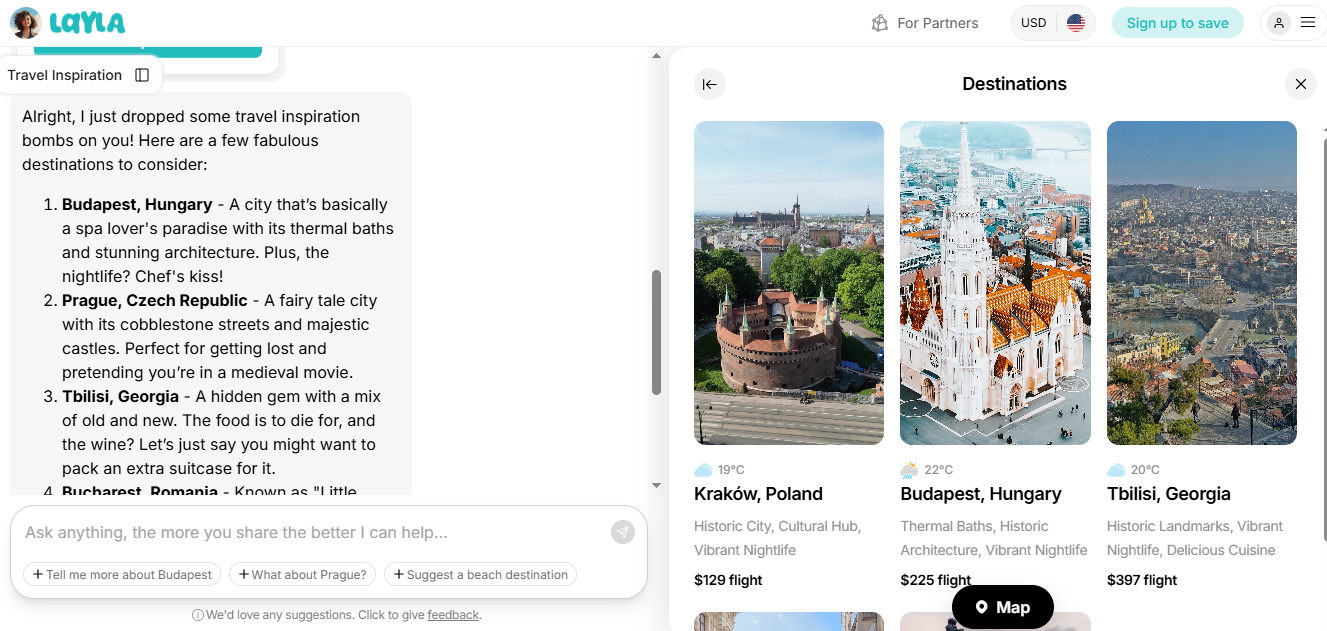
Layla travel bot
This is how Mario Gavira, VP of Growth at Kiwi, formulated this opinion: "The personal AI agents promise to cut through the complexity of travel planning like a hot knife through butter, connecting directly with supplier websites and APIs to create the perfect itinerary."
So the industry separated into two camps with opposing views. Airbnb co-founder and CEO Brian Chesky, while announcing the company’s plans to roll out an AI customer support platform, thinks that it’s still too early: “It’s probably similar to… the mid-to-late ’90s for the internet.”
Yet other experts believe that OTAs and AI agents will coexist and complement each other. For example, Max Starkov, the Hospitality & Travel Technologist, argues that AI can’t replace OTAs because essentially they are the main source of data for AI agents.
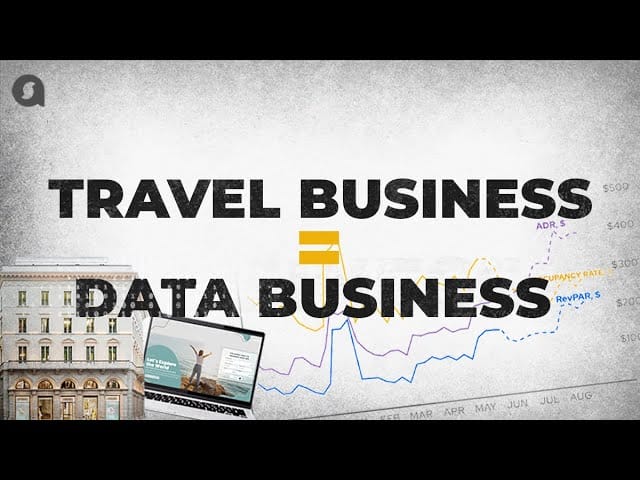

Time will tell what happens with the industry, but one thing is for sure – the changes are coming. So let’s take a look at how AI transforms travel distribution.
AI trip planners
What’s the issue?
Though some people actually enjoy planning their trips, it’s often time-consuming and stressful. Not everyone wants to spend hours juggling different websites to compare flights, hotels, and activities, trying to compose the perfect itinerary.
AI to the rescue:
As we said, trip planning is the single biggest area for AI implementation in travel retail. Seven in ten Americans are either using, planning to use, or open to using AI for this purpose. And Skift Research suggests that while only about a third of respondents have actively used AI-based apps for making travel plans, 65 percent of those who did are satisfied with the results.
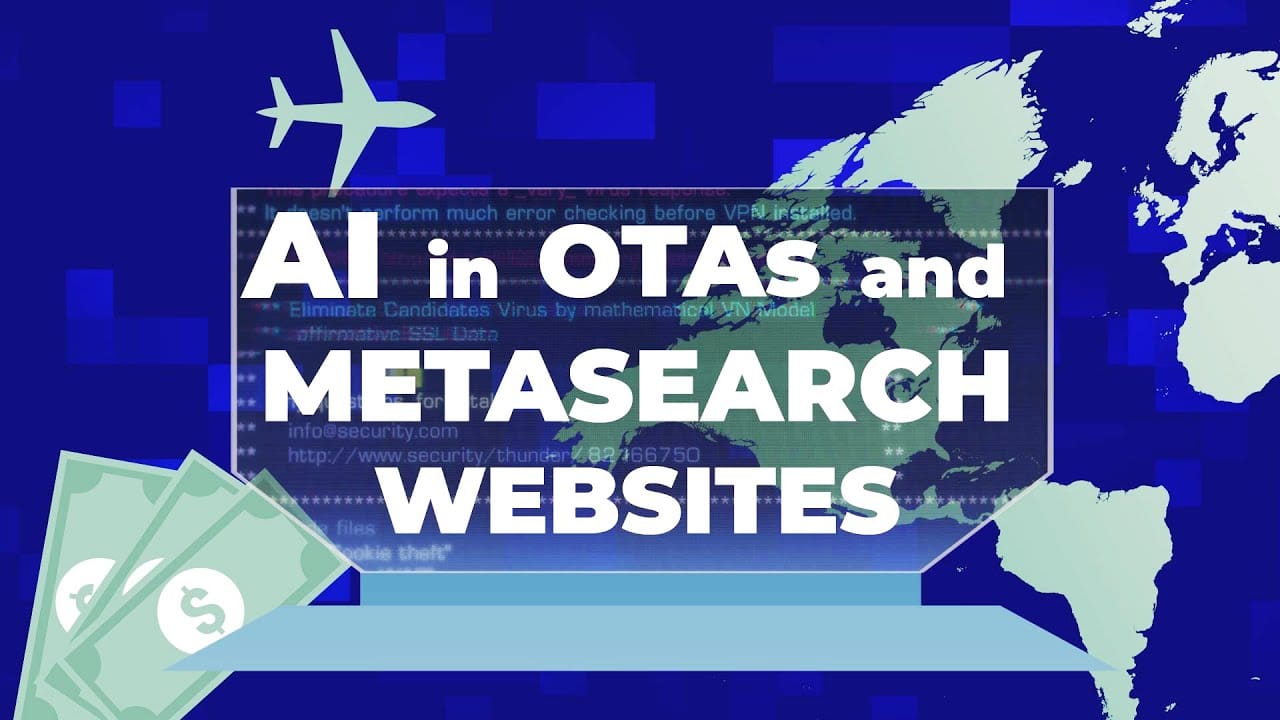

The hottest stuff:
Very soon, virtual assistants will be able to book whatever they suggest. Perplexity has already presented a hotel booking feature. Other forward-looking companies such as Anthropic, Google, Microsoft, and OpenAI are also actively working on AI agents that can interact with the web browser on behalf of the user.
AI in action:
Every major OTA now has a genAI-based virtual assistant. Here are some examples from smaller players.
In 2019, Luxury Escapes, an Australian OTA, presented their Travel Messenger Chatbot developed by Master of Code. It analyzes user behavior and online interaction patterns and then retargets engaged users with new deals that align with their interests. In three months since its launch, the travel chatbot has shown a 3 times higher conversion rate than the website and has generated over $300,000 in sales revenue.
Feelings Engine, from Black Tomato lets you plan your perfect trip based on emotions instead of destinations. To get travel ideas, chat with the bot about how you want to feel – whether it's the thrill of tracking wildlife or the magic of stepping into a storybook.
Bigfoot, a tech startup created by Airbnb alumni, offers a weekend planning chatbot Littlefoot. Built on several LLMs, it generates a curated list of events and activities for the specific location, delivering it with descriptions, imagery, itinerary schedule, maps, etc.
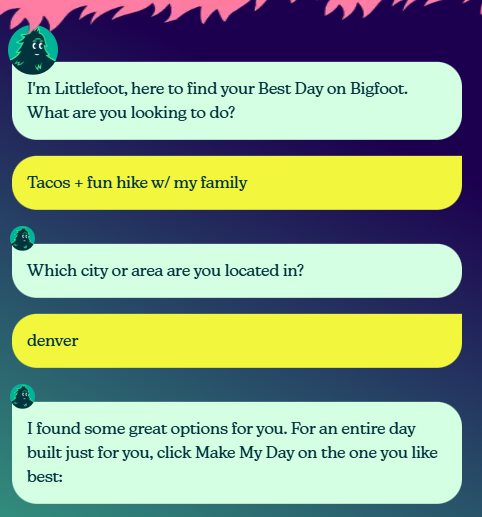
Bigfoot’s Littlefoot
Hopper, an award-winning Canadian travel booking platform, is one of the most downloaded apps in North America. It uses ML to analyze a flight database and predict the best times to book flights and hotels at optimal prices.
Hopper also creates personalized trip recommendations after it learns more about a user by asking questions and getting feedback. Such AI-based suggestions convert 3 times better than a common in-app search.
We at AltexSoft have developed a similar ML-based flight predictor tool to forecast fare changes for Fareboom. We’ve also built a recommender engine for this OTA. This tool analyzes the user interactions and delivers personalized suggestions for travel products.
Also, as part of our Month of AI hackathon in 2024, one of the teams developed an AI travel assistant based on GPT-4 API.
AI for corporate travel
What’s the issue?
Corporate travel management comes with its own set of headaches: from managing complex itineraries and booking changes to staying within budget and ensuring compliance with company policies. Coordinating travel for multiple employees, especially across time zones and regions, can be a logistical nightmare. Then there's the challenge of tracking expenses, finding the best deals, ensuring safety and efficiency… the list goes on.
AI to the rescue:
With all those complexities, no wonder that 90 percent of travel managers use AI. Main use cases are cost savings (71 percent), enhancing the traveler experience (68 percent), and improving data analysis (63 percent).
Sundar Narasimhan, SVP and President at Sabre Labs, said: “The corporate travel industry is moving quickly from exploring AI and genAI to deeply embedding it into their operations. What was once a ‘nice-to-have’ is becoming an operational necessity. Companies that fail to integrate AI-driven decision-making risk falling behind, not just in efficiency and cost savings, but in their ability to deliver the seamless, personalised experiences that travellers now expect.”
But despite the clear benefits, corporate travel managers are facing challenges with AI implementation. Forty-six percent said that the complexity of integrating AI solutions was the biggest one. Other constraints are the lack of internal talent and budget limitations.
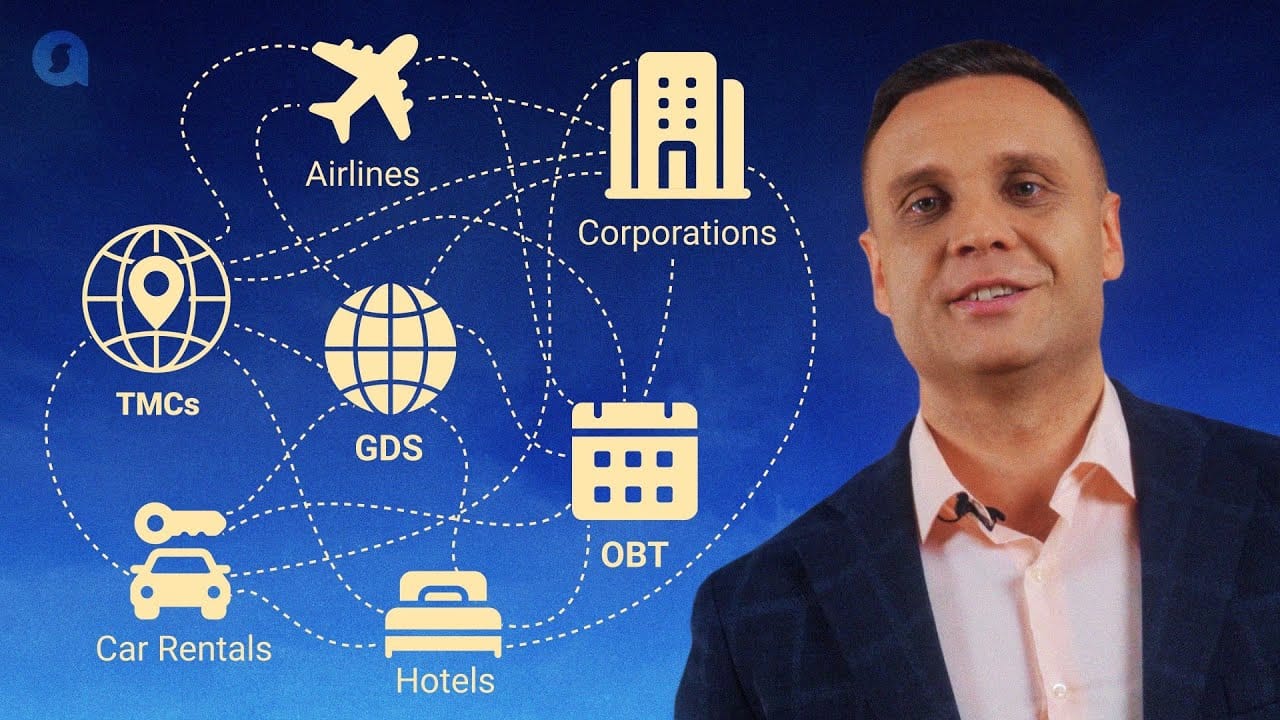

The hottest stuff:
Just like in other sectors, agentic AI is taking corporate travel and expense management to the next level by moving from passive assistance to proactive support. Tech providers develop genAI solutions that will no longer just respond to requests – they anticipate needs, like rebooking flights or adjusting itineraries.
AI in action:
AI is used to support a wide range of workflows. Here are some examples.
Navan’s virtual assistant Ava handles over 150,000 monthly chats. Payhawk has introduced a suite of AI agents for tasks like managing expenses, document processing, and travel bookings.
AMGiNE’s platform uses AI to automatically identify and classify inbound email requests. CWT added an AI-based price optimization component to predict flight rate changes and rebook tickets for savings. And Altour's AI-powered tools assist with booking, predicting disruptions, and ensuring policy compliance.
Honorable mentions: Other AI use cases in travel distribution
There are more niche use cases of how travel resellers use AI tools.
Hotel mapping. All the major hotel mapping providers (GIATA, Juniper Vervotech, Gimmonix, etc.) have AI-powered systems.
Neighborhood description. Switchfly AI uses genAI for its Neighborhood Insights feature that provides more information about the area where hotels are located. They report a 4 percent increase in users searching after viewing destination pages and a 1.61 percent rise in conversion.
Review summary. Expedia and Airbnb test AI for providing users with a convenient summary of reviews.
The future of AI in travel
AI isn’t just a buzzword; It’s becoming a secret sauce of all things tech. From chatty chatbots to nerdy forecasting algorithms – AI is everywhere we look. In fact, it appears that AI is where we didn’t even think to look.
We can see that travel companies increasingly adopt AI for so many purposes, from operational, back-office workflows to customer-facing activities. Knowing current industry trends, we can assume that the areas that will develop most quickly would be
- personalization – because people love that exceptional treatment and want the best bang for their buck;
- multifunctional chatbots and virtual trip planners – because travelers enjoy the ease of interacting with digital assistants instead of doing the trip-planning heavy lifting themselves, so we can expect these tools to become even more context-aware; and
- revenue management – because businesses want to make more money, as simple as that.
Of course, the challenges are still many – from legacy tech to lack of skilled staff to mere financial constraints. For a winning investment, businesses must balance costs and look for optimal ROI. But, whether you want it or not, AI is here to stay. So accept it and make the most of it.
With innovation accelerating at an extraordinary pace, businesses that embrace these advancements today will be the industry leaders of tomorrow.
AltexSoft is not affiliated with any of the brands mentioned in this post. The references are solely for illustrative purposes and do not constitute an endorsement or promotion of any kind.

Maria is a curious researcher, passionate about discovering how technologies change the world. She started her career in logistics but has dedicated the last five years to exploring travel tech, large travel businesses, and product management best practices.
Want to write an article for our blog? Read our requirements and guidelines to become a contributor.
